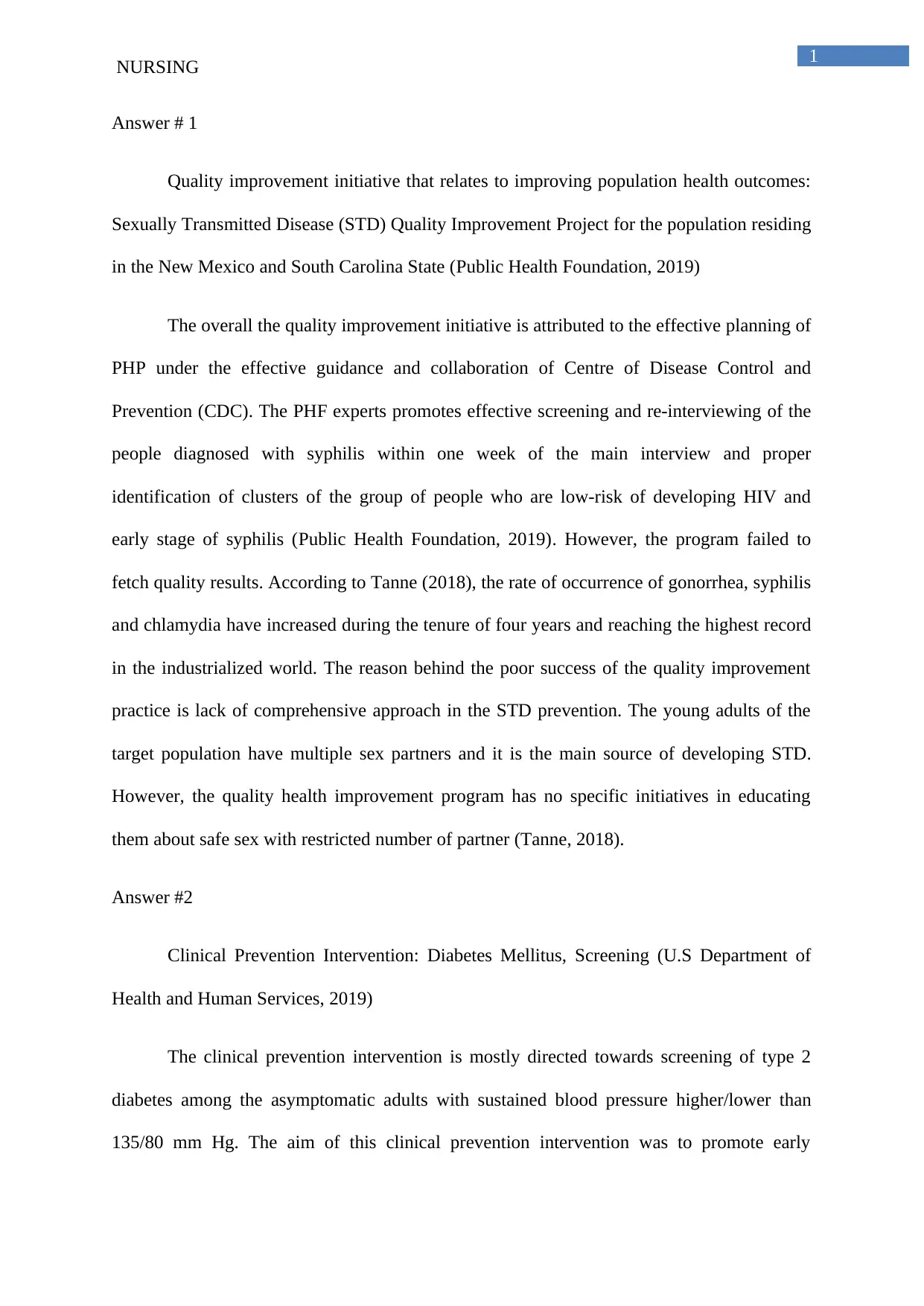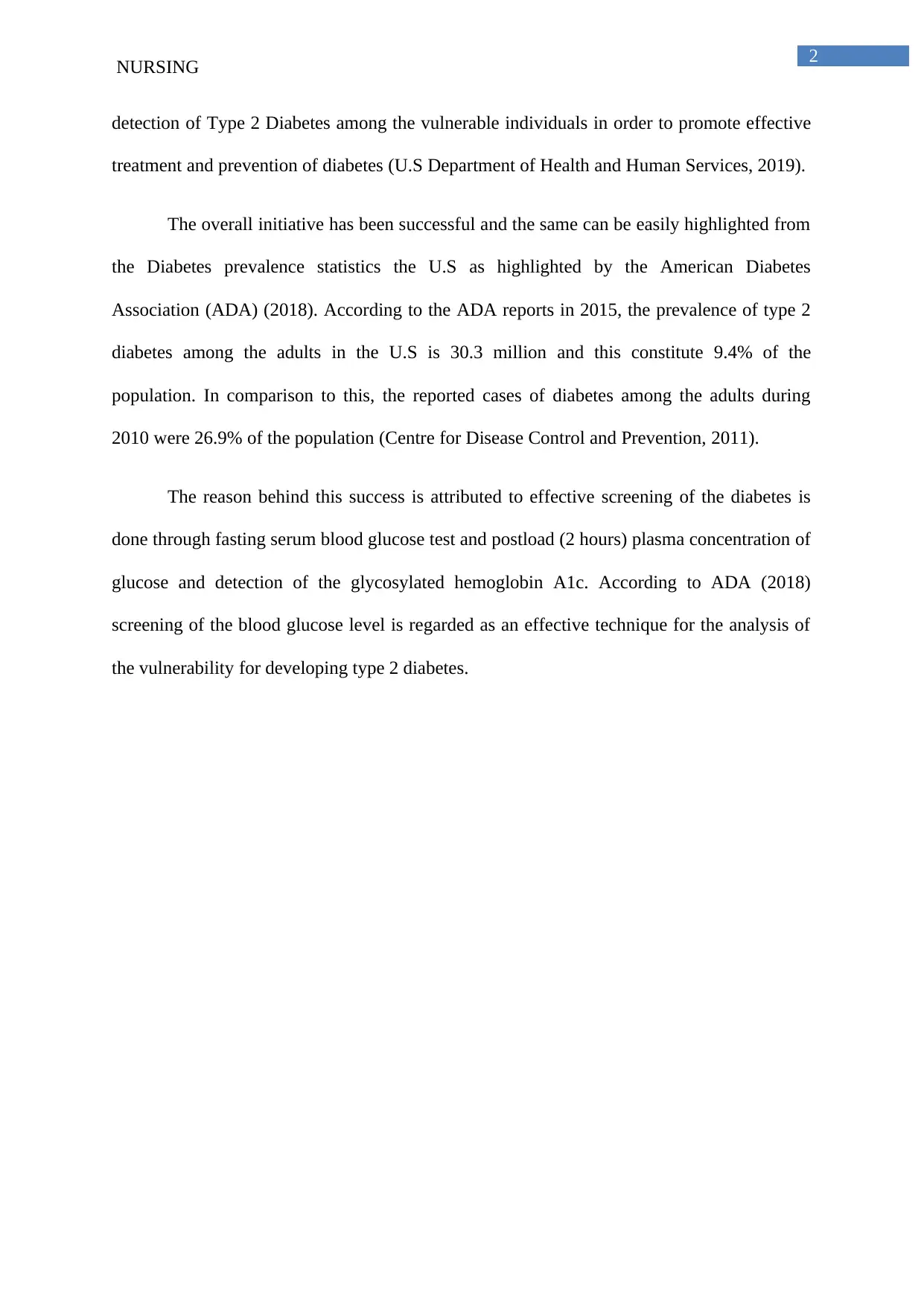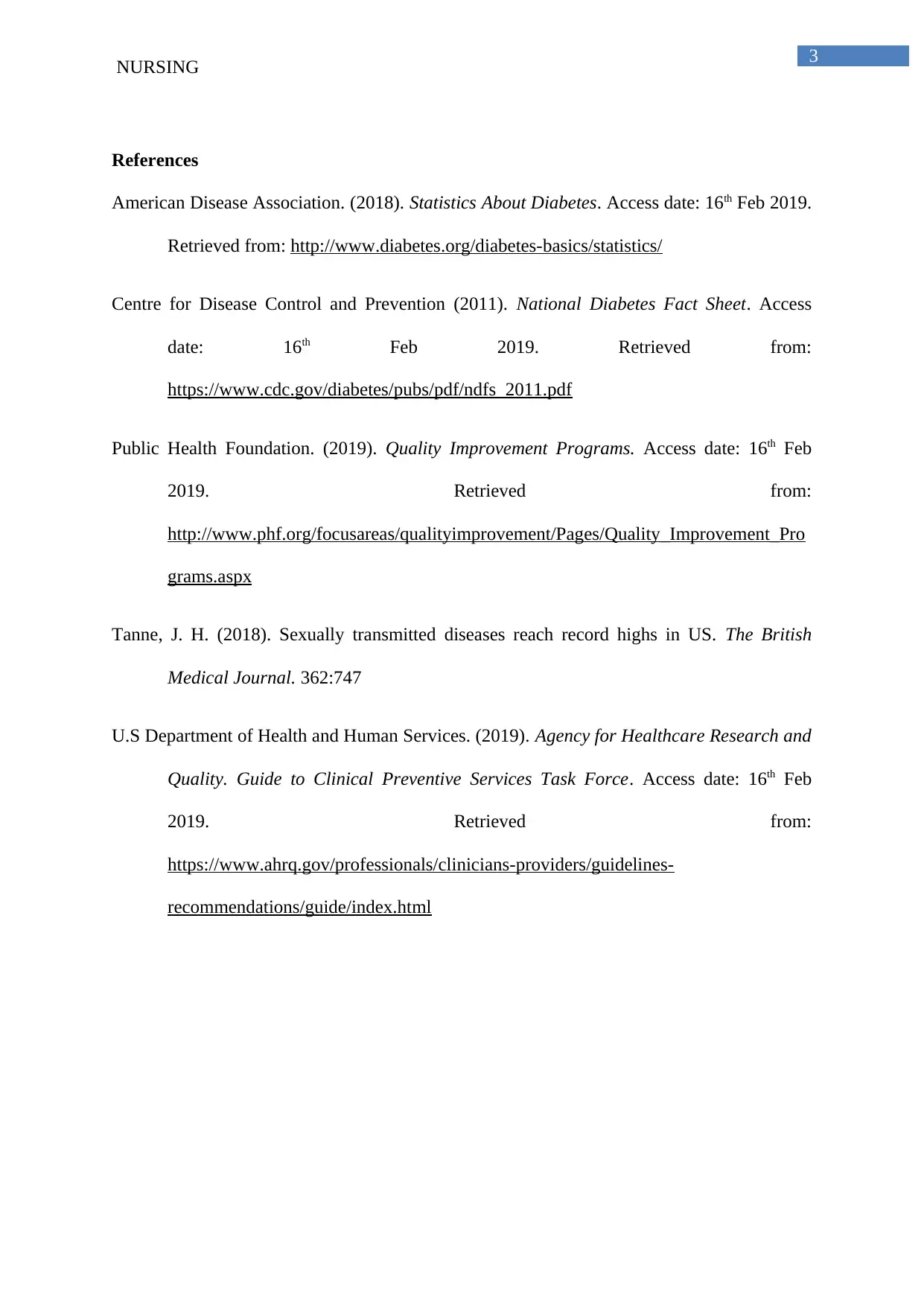Nursing: Evaluating Quality Improvement Initiatives & Interventions
VerifiedAdded on 2023/04/21
|4
|660
|125
Essay
AI Summary
This essay discusses quality improvement initiatives and clinical prevention interventions in nursing, focusing on a Sexually Transmitted Disease (STD) Quality Improvement Project in New Mexico and South Carolina, and a clinical prevention intervention for Diabetes Mellitus screening. The STD project, despite aiming to improve public health through screening and re-interviewing, showed limited success due to a lack of comprehensive strategies in educating young adults about safe sex. Conversely, the diabetes screening initiative, targeting asymptomatic adults with high blood pressure, proved successful in early detection and prevention of Type 2 Diabetes, attributed to effective screening methods like blood glucose level testing. The essay references data from organizations like the CDC and ADA to highlight the outcomes and effectiveness of these programs.
1 out of 4










![[object Object]](/_next/static/media/star-bottom.7253800d.svg)